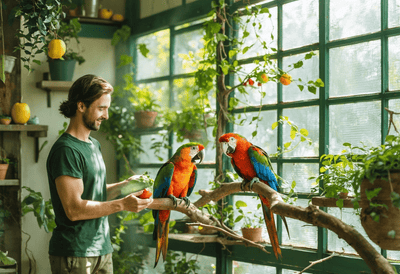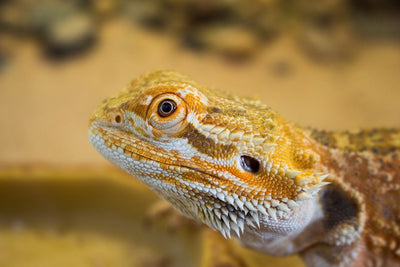
Welcome to the captivating realm of miniature ecosystems! This guide invites you to embark on a journey exploring a diverse array of habitats and supplementary elements essential for nurturing thriving communities. Whether you're a novice venturing into the world of colony care or a seasoned enthusiast expanding your collection, the proper selection of environments and accompanying features is paramount to ensuring the welfare of your diminutive companions. From intricately designed habitats of various sizes to indispensable components such as hydration stations, foraging zones, and safe bedding materials, this comprehensive exploration aims to furnish you with invaluable insights and suggestions. Prepare to immerse yourself in the enchanting universe of nurturing tiny ecosystems, where you can observe these diligent creatures as they go about their daily routines in captivating settings. Join us on this odyssey of discovery and unlock the boundless potential that awaits in crafting a mesmerizing environment for your miniature residents!.
Importance of Quality Ant Arenas and Accessories
Creating a Safe and Stimulating Environment for Ant Colonies.
Proper Ventilation: Ensuring adequate airflow in the ant arena
Ant colonies thrive in environments with proper ventilation. It is crucial to provide sufficient airflow within the ant habitat to maintain air quality and prevent the buildup of excess moisture. Proper ventilation also helps regulate temperature and humidity levels, creating a comfortable space for the ants to inhabit.
Substrate Selection: Choosing suitable substrate for nest-building and tunneling
Selecting the right substrate is essential for ant colonies to engage in natural behaviors such as nest-building and tunneling. The substrate should mimic their natural habitat, allowing them to create intricate tunnel systems and chambers. Materials like sand, soil, or a combination of both can be used to provide a conducive environment for the ants to establish their colony.
Food and Water Stations: Placement and maintenance of food and water sources
Ants require access to food and water to survive and thrive. Placing food and water stations strategically within the ant arena encourages foraging behavior and ensures that the colony remains well-nourished and hydrated. It is important to regularly replenish and clean these stations to prevent contamination and spoilage.
Enrichment Activities: Providing various activities to stimulate foraging and exploration
Enrichment activities play a vital role in keeping ant colonies mentally and physically stimulated. Introducing challenges such as puzzles, mazes, or interactive feeders can promote foraging behavior and encourage exploration. These activities not only prevent boredom but also help maintain the ants' cognitive abilities and overall well-being.
Temperature and Humidity Control: Monitoring and regulating environmental conditions for ant well-being
Maintaining optimal temperature and humidity levels is crucial for the health and longevity of ant colonies. Monitoring these environmental factors and making adjustments as needed can help prevent stress-related issues and ensure the well-being of the ants. Using tools like thermometers and hygrometers can aid in creating a comfortable and stable environment for the ants to thrive.
Quality ant arenas and accessories play a significant role in creating a safe and stimulating environment for ant colonies. By focusing on proper ventilation, substrate selection, food and water provision, enrichment activities, and environmental control, ant enthusiasts can ensure the well-being and happiness of their beloved ant colonies.
Exploring Various Ant Arenas
Types of Ant Habitats: Formicariums, Outworlds, and Hybrid Nests
Benefits of Each Arena Type for Ant Colonies.
When it comes to creating the perfect habitat for your ant colony, the choice of arena plays a crucial role. In this blog section, we will delve deeper into the intricate world of ant habitats, exploring the intriguing features of Formicariums, the vast expanses of Outworlds, and the innovative designs of Hybrid Nests. Understanding the nuances of each arena type is essential for providing the ideal living space for your ant colonies.
Formicariums: The Intricate Underground Worlds
Formicariums, also known as ant farms, simulate the underground tunnels and chambers where ants naturally thrive. These habitats often consist of interconnected chambers and tunnels, allowing ants to exhibit their natural behaviors of tunneling, foraging, and caring for their young. The enclosed nature of Formicariums provides security and mimics the darkness of subterranean environments, promoting colony cohesion and growth.
Outworlds: Expanding Horizons for Foraging
Outworlds serve as the foraging grounds for ant colonies, offering a vast expanse for exploration and food gathering. These open arenas mimic the external environment where ants scavenge for food and resources. Outworlds are essential for providing ample space for ants to roam, forage, and engage in social interactions, contributing to the overall well-being and mental stimulation of the colony.
Hybrid Nests: Innovations in Ant Housing
Hybrid Nests combine the best features of Formicariums and Outworlds, offering a versatile and dynamic living space for ant colonies. These innovative habitats integrate enclosed nesting areas with spacious foraging zones, providing a balance between security and exploration. Hybrid Nests promote colony activity and growth by catering to the diverse needs of ants, allowing them to establish nesting sites and forage efficiently.
The choice of ant arena significantly impacts the health and vitality of ant colonies. By understanding the unique benefits of Formicariums, Outworlds, and Hybrid Nests, ant keepers can create enriching environments that support the natural behaviors and social structures of their beloved ants. Whether you prefer the intricate tunnels of Formicariums, the expansive foraging grounds of Outworlds, or the innovative designs of Hybrid Nests, each arena type offers distinct advantages for nurturing thriving ant communities.
Essential Feeding Supplies for Ants
Proper nutrition is vital for the health and well-being of ant colonies. Just like any other living organism, ants require a balanced diet to thrive and carry out their various tasks efficiently. In this blog section, we will explore the importance of providing ants with the right nutrition and the essential feeding supplies needed for their care.
Importance of Proper Nutrition for Ant Colonies
Ants are incredibly industrious creatures that work together in highly organized colonies. To support this level of activity, they need a nutrient-rich diet that provides them with the necessary energy and resources. Proper nutrition not only ensures the overall health of the ant colony but also influences their behavior, growth, and reproduction.
Types of Feeding Dishes and Their Role in Ant Care
Feeding dishes play a crucial role in ant care by providing a designated space for offering food to the colony. There are various types of feeding dishes available, each serving a specific purpose. From simple trays to more complex designs with built-in hydration systems, these feeding dishes help keep the food clean, prevent contamination, and make it easier for ants to access their meals. Choosing the right feeding dish is essential to ensure that the ants receive adequate nutrition and maintain a hygienic feeding environment.
Additional Feeding Supplies
Apart from feeding dishes, there are other essential supplies that contribute to the overall well-being of ant colonies. Ant keepers should consider providing sugar water or honey as a source of carbohydrates, protein-rich foods like insects or commercial ant gel, and vitamins and minerals through supplements or fresh fruits and vegetables. These additional supplies help meet the diverse nutritional needs of different ant species and life stages.
Feeding Schedule and Monitoring
Establishing a regular feeding schedule is crucial to ensure that ants have access to food when needed. Monitoring the food consumption and preferences of the colony can also provide valuable insights into their health and dietary requirements. Ant keepers should observe how quickly the food is consumed, adjust the quantities offered accordingly, and remove any uneaten or spoiled food promptly.
Understanding the importance of proper nutrition for ant colonies and having the right feeding supplies are key aspects of responsible ant care. By providing ants with a balanced diet, suitable feeding dishes, and additional nutritional supplements, ant keepers can promote the well-being and longevity of their ant colonies, fostering a thriving and active insect community.
Hydration and Nesting Needs
Significance of Water Tubes and Dispensers
Water is a vital component for the survival of ant colonies. Providing a consistent and accessible water source is crucial to ensure the hydration of the ants. Water tubes and dispensers offer a convenient way to supply water to the colony without causing any disturbance. These tools help in maintaining the right moisture levels within the ant habitat, promoting overall colony health and productivity.
Choosing Suitable Nesting Materials for Colony Development
The choice of nesting materials plays a significant role in the development and growth of ant colonies. Different ant species have varying preferences when it comes to nesting materials, with some requiring specific textures or compositions to thrive. By selecting suitable nesting materials, such as soil, sand, or specialized substrates, ant keepers can create a conducive environment for the ants to establish their nests and rear their brood effectively. This careful selection not only supports the physical structure of the colony but also contributes to its overall success and sustainability.
Additional Considerations for Hydration and Nesting Needs
Apart from water tubes and suitable nesting materials, there are other factors to consider when addressing the hydration and nesting needs of ant colonies. Temperature and humidity levels within the ant habitat are crucial aspects to monitor. Ants thrive in specific temperature ranges, and maintaining optimal humidity levels is essential for their well-being. Additionally, providing a variety of nesting options within the habitat allows ants to choose the most suitable location for their colony, promoting natural behavior and social structure.
Furthermore, periodic checks and maintenance of water tubes and dispensers are necessary to ensure continuous water supply. Cleaning these devices regularly prevents the buildup of contaminants that could harm the ants. When it comes to nesting materials, observing the ants' behavior and adjusting the substrate or texture based on their preferences can enhance colony development.
Understanding and addressing the hydration and nesting needs of ant colonies go a long way in promoting their health, productivity, and sustainability. By incorporating suitable water sources, appropriate nesting materials, and considering additional factors like temperature and habitat variety, ant keepers can create an optimal environment for their colonies to thrive and flourish.
Selecting the Best Supplies for Ants
Matching Supplies to Ant Species' Requirements
Ant keeping is a fascinating and educational hobby that demands precision and care, particularly in selecting the supplies for your ant colony. A critical aspect to consider is aligning the supplies with the specific needs of the ant species under your care. Different ant species exhibit distinct requirements concerning space, humidity, temperature, and food sources. It is imperative to conduct comprehensive research on the particular species you are nurturing to ensure they are provided with the most suitable supplies.
Ensuring Safety and Durability of Accessories
Prioritizing the safety and durability of the accessories within your ant habitat is paramount for the welfare of your ant colony. Opt for materials that are non-toxic and harmless to your ants, thereby eliminating any potential risks to their well-being. Furthermore, choose supplies that are resilient and easy to maintain for a sanitary environment within the habitat.
Importance of Nest Design
The nest design significantly influences the comfort and productivity of your ant colony. Factors such as ventilation, nesting space, and humidity regulation play pivotal roles in selecting an appropriate nest for your ants. Certain ant species thrive in dark, humid settings, while others prefer well-ventilated habitats. Understanding the preferences of your ant species will aid in selecting the most suitable nest design.
Feeding Accessories
Food stands as a fundamental requirement for the sustenance of your ant colony, and the provision of suitable feeding accessories is crucial for their well-being. Consider utilizing feeding dishes or test tubes to present a variety of food choices to your ants. Prevent overcrowding in the feeding area to avert competition and potential conflicts among the ants.
Considering Seasonal Variations
It is essential to account for seasonal changes when selecting supplies for your ant colony. Ants may have different needs during various seasons, such as increased food requirements in preparation for hibernation. Adjust the supplies accordingly to ensure the well-being of your ants throughout the year.
By meticulously choosing supplies that cater to the requirements of your ant species, ensuring the safety and durability of accessories, focusing on nest design, providing appropriate feeding accessories, and considering seasonal variations, you can establish a thriving and nurturing environment for your cherished ant colony.
Conclusion
Exploring a wide range of ant arenas and accessories opens up a fascinating world of possibilities for both ant enthusiasts and beginners alike. With diverse options available to cater to different ant species and sizes, enthusiasts can create engaging environments for their colonies to thrive and grow. By investing in quality arenas and accessories, ant keepers can not only enhance the well-being of their tiny pets but also enjoy a unique and educational experience that brings them closer to the captivating world of ants.






